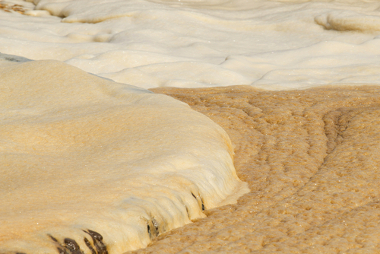As seen in the text Types of effluent treatment, there are several types of water treatments polluted by effluents from domestic sewage, industrial and agricultural waste. These effluents need to be treated before being released into the environment, that is, it is essential to adapt conveniently the effluents so that, when they are released into the receiving bodies, they do not cause environmental impacts significant.
In that same article, the main types of primary effluent treatments were shown, that is, the first treatments to which the Polluted water is subjected using physicochemical methods in order to separate suspended solids and materials from the water. floating.
Now we'll talk about the next step: secondary effluent treatments. In this case, biological treatments are used to remove biodegradable substances present in the effluent. This means that secondary effluent treatment methods aim to remove organic matter, which may be dissolved (soluble BOD (Biochemical Oxygen Demand)) or in suspension (suspended or particulate BOD), through methods that accelerate the process of decomposition of organic pollutants that would occur naturally, but more slowly.
These biological processes can be aerobic (require the presence of oxygen for their development) or anaerobic (do not require oxygen). There is a wide variety of secondary effluent treatment methods, and the most common are:
* Stabilization ponds: These are places where effluents are treated using chemical and biological methods in order to retain organic matter and generate quality water. There are several types of stabilization ponds, such as the aerated ponds that we will talk about in the next item.
Another example is facultative ponds where the biochemical soluble oxygen demand (BOD) is stabilized by aerobic bacteria, whose required oxygen is provided by algae that perform photosynthesis. The BOD that goes to the bottom of the tank is stabilized there by anaerobic bacteria.
The stabilization of residues can also be done by anaerobic processes, in which microorganisms act in the absence of air or elemental oxygen. The treatment can be referred to as mechanical fermentation. This stabilization can also be done through the addition of chemicals (chemical stabilization) such as ferric chloride, lime, aluminum sulfate and organic polymers.
* Aerated ponds: They are basins where the effluent passes through an electromechanical aeration that provides a continuous supply of oxygen required for the metabolism of organisms that decompose soluble and finely particulate organic matter.
These microorganisms consume the organic matter in the effluent and convert it into carbon dioxide, water and cellular material. The aeration energy also makes it possible to keep solids in suspension and prevent the deposition of bacterial flakes.
This mixture is called “liquor”, which is sent to ponds or settling tanks where sedimentation and solid stabilization occur, which is then called sludge. The accumulated sludge is collected and separated from the treated effluent.

Use of aerated pond in a sewage treatment plant
* Activated sludge and its variants: This sludge returns to the aeration tanks for the reactivation of the bacterial population in the aeration tank, increasing thus the efficiency of the process, as it maintains the concentration of microorganisms within a certain proportion in relation to the organic load affluent.
In addition to removing organic matter, the activated sludge system can also be used to remove nitrogen and phosphorus.

Activated sludge image
* Percolation filters: This filter is a tank that contains filling material that forms a fixed bed. On the surface of each of these filling materials, micro-organisms develop, which in turn clump together in the form of flakes or granules in the interstices of the material. Thus, the organic compounds from the effluent come into contact with the biomass and are converted through an aerobic biochemical oxidation. So, in fact, they are not filters, but biological reactors that keep the microbial mass trapped in the form of biofilms (a mucilaginous film populated by bacteria).
* RBCs (rotating systems): RBC is the English acronym for “Rotating Biological Contacts”, better known as biodisks. These are systems with conjugated plastic (polypropylene) plates or discs that rotate. When the process starts, the microorganisms in the effluent adhere to this plastic material.
* Anaerobic reactors: Briefly, the reactor enhances the degradation of organic matter. Biomass can even be converted to biogas.
After going through one or more of these processes, the effluent usually goes to the third stage of treatment, depending on the type of pollutants in the water. To learn more about this next step, read the text Tertiary effluent treatments.
By Jennifer Fogaça
Graduated in Chemistry
Source: Brazil School - https://brasilescola.uol.com.br/quimica/tratamentos-secundarios-efluentes.htm


